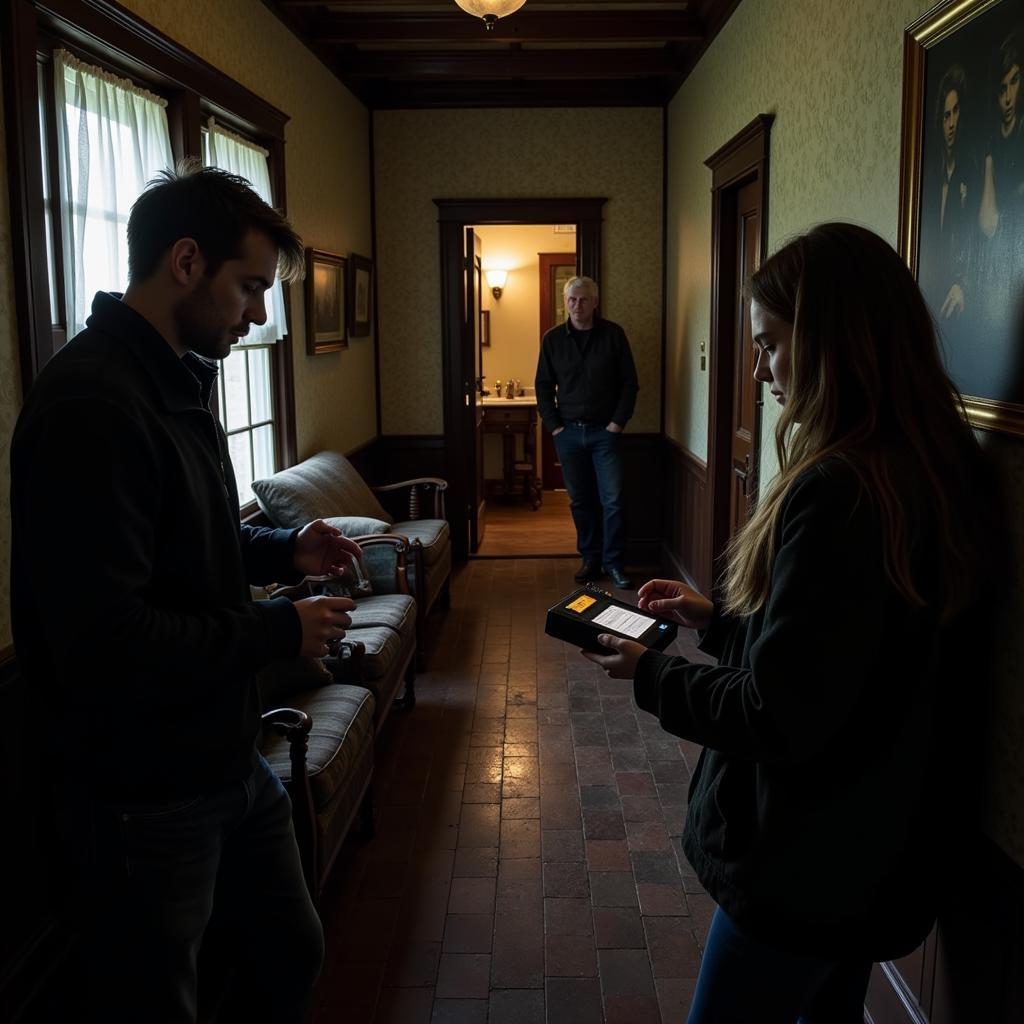Basic and applied research are two fundamental approaches to investigating any phenomenon, including the enigmatic world of the paranormal. Understanding the difference between these research methods is crucial for evaluating the credibility and potential impact of paranormal investigations. This article delves into the distinctions between basic and applied research, exploring how these methodologies can be employed to shed light on unexplained occurrences and advance our understanding of the unknown.
One key difference lies in the primary objective. Basic research seeks to expand our fundamental knowledge and understanding of a topic, while applied research aims to solve specific, practical problems. In the context of paranormal research, basic research might explore the nature of psychic abilities or the potential mechanisms behind ghost sightings. Applied research, on the other hand, might focus on developing methods for detecting paranormal activity or mitigating its perceived negative effects.
Exploring the Core of Basic Research
Basic research in the paranormal realm often delves into theoretical frameworks, exploring concepts like energy fields, consciousness, and the possibility of other dimensions. This type of research often relies on observation, exploration, and the development of new hypotheses. While it may not offer immediate practical solutions, it lays the groundwork for future investigations and can inspire innovative approaches to understanding the paranormal. Think of it as building the foundation upon which further discoveries can be built.
The Significance of Basic Research in Paranormal Studies
The value of basic research lies in its potential to revolutionize our understanding of the universe and our place within it. By exploring fundamental questions about the nature of reality and the limits of human perception, basic research paves the way for paradigm shifts and breakthroughs in our comprehension of anomalous phenomena.
difference between applied and basic research
The Practical Applications of Applied Research
Applied research takes the theories and findings of basic research and applies them to real-world situations. In paranormal investigations, this could involve developing new technologies for detecting paranormal activity, creating strategies for interacting with spirits, or devising methods for protecting individuals from perceived paranormal harm. This practical approach often yields tangible results and can have a direct impact on the lives of those experiencing paranormal phenomena.
Case Studies in Applied Paranormal Research
Numerous examples demonstrate the practical implications of applied research in the paranormal field. From developing EMF meters to creating specialized software for analyzing EVP recordings, applied research has led to advancements in our ability to investigate and understand unexplained occurrences.
basic vs applied research examples
 Applied Research Tackling Paranormal Phenomena
Applied Research Tackling Paranormal Phenomena
Comparing and Contrasting: Basic vs. Applied Research
While distinct in their objectives, basic and applied research are interconnected and often complement each other. Basic research provides the theoretical foundation for applied research, while applied research can generate new questions and avenues for basic research to explore. This symbiotic relationship drives progress in any field, including the study of the paranormal.
“Understanding the nuanced relationship between basic and applied research is paramount for any serious paranormal investigator,” states Dr. Evelyn Reed, a leading researcher in parapsychology. “Basic research lays the groundwork, while applied research builds upon that foundation, creating a powerful synergy that drives discovery.”
applied research vs basic research
Professor Alistair Finch, a renowned expert in anomalous phenomena, adds, “The interplay between basic and applied research is crucial for advancing our understanding of the paranormal. Each informs the other, creating a dynamic cycle of exploration and discovery.”
Conclusion: Advancing Paranormal Understanding Through Research
Basic and applied research are both essential tools in the ongoing quest to understand the paranormal. By embracing both approaches, we can expand our knowledge of the unexplained, develop practical solutions for dealing with paranormal phenomena, and move closer to unraveling the mysteries that lie beyond our current comprehension.
“In the realm of the paranormal, where so much remains unknown, embracing both basic and applied research methodologies is our best chance at gaining a clearer understanding of these enigmatic phenomena,” says Dr. Reed.
FAQs
- What is the main difference between basic and applied research? Basic research seeks to expand knowledge, while applied research aims to solve practical problems.
- How can basic research contribute to paranormal investigations? It provides the theoretical framework for understanding anomalous occurrences.
- What are some examples of applied research in the paranormal field? Developing EMF meters, analyzing EVP recordings, and creating methods for spirit communication.
- Why is it important to use both basic and applied research in paranormal studies? They complement each other, driving progress and discovery.
- What are some ethical considerations in applied paranormal research? Respecting individuals’ beliefs and experiences, ensuring safety, and avoiding sensationalism.
Need assistance with your Paranormal Research? Contact us 24/7: Phone: 0904826292, Email: research@gmail.com, or visit us at No. 31, Alley 142/7, P. Phú Viên, Bồ Đề, Long Biên, Hà Nội, Việt Nam.